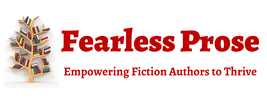|
Author: Sandy Vaile Originally published by Romance Writers of Australia, Hearts Talk ezine, September 2021. The subtleties of story Point of ViewAre you sometimes bamboozled by all of the choices and subtleties of story Point of View (POV)? You’re not alone. POV is one of the most common errors in fiction manuscripts and even after reading explanations, authors are often still unclear. Should they choose first person, second person, limited third person or omniscient? Which one is right for their story? The mind boggles. Today we’re going to explore the difference between Point of View and Perspective and the whole reason behind applying them to fiction. I’m not going to go into the different types of POV or how to use them, but will:
Point of View has evolved over timeIn the early 19th century the omniscient POV was common place and was used by many of the great literary masters, i.e. Charles Dickens and Leo Tolstoy, but by the end of the same century it had become frowned upon and called intrusive. By the early 20th century novelists were even swapping between multiple POV in the same book. In the 22st century Deep POV has become increasingly popular, particularly in the romance-based genres. My point is that the popularity of different POV changes over time, is different in each genre and is often more a judgement call than rule. So do yourself a favour and relax in relation to choosing what’s right for your story. Some of the rubbish I’ve heard:
The difference between POV and perspectiveWhen a writer breaks POV (starts letting the reader see/know things the narrator couldn’t possibly see/know) it distracts the reader from what’s important in the story and tends to prevent them from having a close association with the narrator. Perspective is how the narrator and characters view and experiences the story world. The character’s perspective will determine how they view their surroundings, react to situations, process information and make choices about actions to take. Everything that makes up a person, e.g. their past experiences, upbringing and influences, will all affect how the POV narrator experiences and reacts within the story. For example:
When a writer doesn’t delve deep enough into their character profiles, it can cause them to feel two dimensional to the reader. The result is characters who lack motivation to drive their actions, which makes the story fall flat. POV is the vantage point of the narrator (who is telling the story). It might be a single character, multiple characters, someone who isn’t even in the story or an all-seeing narrator. The type of POV you choose will determine how much the narrator can see/know and how close to the action they get. For example:
The effect of your charactersSo, every time a character moves through you story world, put yourself in their shoes and consider their perspective. As you plan a scene, think about what they would see and know, why they would behave a certain way and what is causing them to make choices and take actions. Each one will have a a different perspective.
Then, when you come to write the scene, think about who the POV narrator is and what they can realistically see, hear, feel, taste and know. Stay within these boundaries as you write, which means that some characters will only ever been seen from an external view and others the reader might get to experience up close and personal. Although Point of View and perspective and interrelated, they are different aspects that work together to keep the reader’s attention focused on the important parts of the story and strengthen their understanding of the characters in play. It’s important to write within the boundaries of your chosen POV, to keep readers focused on the right information, and within each character's perspective, to keep readers engaged. The most important rule to remember with POV is, be consistent.
0 Comments
Your comment will be posted after it is approved.
Leave a Reply. |
Fearless ProseEmpowering aspiring authors to confidently write novels they're proud to publish Categories
All
Archives
May 2024
|
© Sandy Vaile 2012-2024 |
Contact and Privacy Policy - About Sandy |




 RSS Feed
RSS Feed